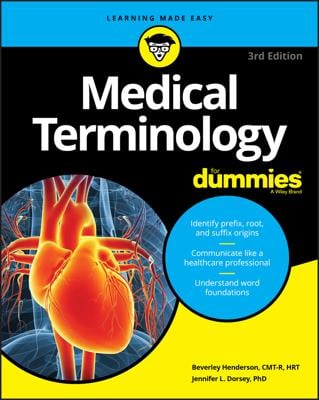You will need to know the medical terminology for the appendicular skeleton and joints in the body. How else will you be able to talk about bones and how they connect in a medical setting?
Appendicular skeleton
Think of the word appendage when your thoughts turn to the appendicular skeleton. These are your reachers, grabbers, and hoofers. Appendages fall into two major categories of bones.
Upper extremities
Arms and hands are part of this category. The bones of the arm and hand include the humerus, the upper arm bone. The large head of the humerus is round and joins the scapula and clavicle. The ulna and radius are the bones of the lower arm or forearm. The bony prominence of the ulna at the elbow is called the olecranon.
Carpals are wrist bones. Finally, there are two rows of four bones. The metacarpals are five bones radiating to the fingers. Phalanges (the singular is phalanx) are the finger bones.
Each finger has three phalanges: the proximal, middle, and distal. The proximal is the phalange closest to the point of origin, whereas the distal is farthest from the point of origin. So, the proximal would be the first after the knuckle, the middle would be in the middle, and the distal at the fingertip. The thumb has only two phalanges: medial and distal at tip of the thumb, which is why it is categorized differently than the rest of your fingers.
Diaphysis comes from Greek diaphusis, meaning “state of growing between.” Diaphysis is the shaft of long bones that grows as children grow.
Leg and foot
The femur is the thigh bone. At the top end of it, a rounded head fits into a socket in the hip bone called the acetabulum.
The patella, or kneecap, is a small flat bone that lies in front of the joint between the femur and one of the lower leg bones called the tibia. The tibia is the larger of the two lower bones of the leg, often referred to as the shin bone. The fibula is the smaller of the two bones.
The tarsals, or ankle bones, are short bones that are much like the carpal bones of the wrist, but larger. The calcaneus, the largest of these bones, is also called the heel bone. Metatarsals compose the forefoot or bones leading to the phalanges in the toes. There are two phalanges in the big or great toe and three in each of the other four toes.
Just like the fingers, all the bones in the toes are phalanges, from proximal to distal. In the big or great toe they are called the proximal and distal, differing slightly from the thumb.
The femur is the longest bone in the body.
Joints
Now think about the “glue” that holds all these bones together. Okay, joints aren’t really made of glue, but they sure do a good job of keeping everything connected. Let’s articulate that concept a bit better: Joints, also called articulations, are the coming together of two or more bones. Some are not movable, such as the suture joints between the cranial bones. Some joints only partially move, such as joints between the vertebrae.
Most joints do allow movement. These freely movable joints are called synovial joints. An example is the ball and socket type — the hip joint, for example, in which the head of the femur fits into the acetabulum. Another synovial joint is the hinged type as seen at the elbow, knee, or ankle joints.
The bones of a synovial joint are separated by a capsule, composed of fibrous cartilage. Ligaments of connective tissue hold the bones together around the capsule to strengthen it. The bone surfaces at a joint are covered with a smooth surface called the articular cartilage. The synovial membrane is the inner layer of the capsule, the layer beneath the capsular surface.
The synovial cavity is filled with a lubricating fluid produced by synovial membranes. This fluid contains water and nutrients that help to lubricate the joints so that friction on the articular cartilage is minimal.
Bursae (singular bursa) are closed sacs of synovial fluid lined with synovial membrane. They lie in the spaces between tendons, ligaments, and bones and lubricate areas where friction would normally develop close to the joint capsule. The olecranon bursa at the elbow joint and the patellar bursa at the knee are examples of bursae.

